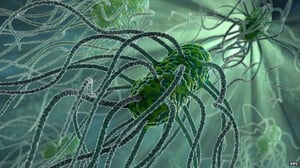 Maintaining protein function and stability during the entire process of protein expression and purification is crucial. Though a lot of strategies are being implemented by many researchers, each protein has its own requirements for its stability. Some proteins are prone to aggregation, a small trigger is enough to destabilise the protein at any stage of purification. Each and every step of protein purification is challenging for maintaining stability of aggregate-prone proteins. Few strategies to be considered while purifying these sensitive proteins starting from cloning to storage of pure protein.
Maintaining protein function and stability during the entire process of protein expression and purification is crucial. Though a lot of strategies are being implemented by many researchers, each protein has its own requirements for its stability. Some proteins are prone to aggregation, a small trigger is enough to destabilise the protein at any stage of purification. Each and every step of protein purification is challenging for maintaining stability of aggregate-prone proteins. Few strategies to be considered while purifying these sensitive proteins starting from cloning to storage of pure protein.
1. Cloning and Expression strategies:
- Tight control of protein expression by using specific promoters: Tight regulation of transcription helps in the expression of a protein in a controlled environment, which is suitable for scale-up and It prevents leaky expression of the protein. When this is combined with a low copy number vector, enhances the protein quality. Slow expression conditions help in preventing accumulation of proteins. The ability to control expression levels is the key factor for the best promoter. e.g: T7 promoter, ara C promoter, csp A promoter.
- Cloning with solubility enhancing fusion partners: For improving the solubility of proteins, fusion partners can be used. In addition to enhanced solubility, some of them can be used for affinity However, the effect of fusion partner on the protein stability and solubility cannot be predicted. There is a need for a parallel check for few of these fusion partners to optimize a suitable partner. Fusion partners stabilize partially folded proteins until proper folding occurs by chaperone activation. Fusion partners like Trx A help in proper folding of proteins containing disulfide bonds. Few examples of Fusion partners , Thioredoxin A (Trx A), N- utilization substance A (Nus A), Maltose binding protein (MBP), Small ubiquitin-like modifier (SUMO), etc.,
- Using specialized E.coli strains for soluble protein expression: E.coli expression strains are available commercially that can be used for various purposes. They also help in tight induction regulation similar to vectors. BL21A1 strain has arabinose induced tight regulation of T7 polymerase. Some strains contain mutated Lac permeate gene that regulates the uniform entry of IPTG into all cells. These strains increase the chances of solubility by reducing translation rate allowing proper protein folding. Bacterial strains like C41(DE3), C43(DE3) were developed to enhance the solubility of aggregate-prone proteins especially membrane proteins. Lemo21(DE3). Strains such as Origami and Shuffle contain Disulphide bond isomerase gene (DsbC, DsbA) that help in disulfide bond formation and thereby producing an active soluble protein in periplasmic space.
- Choosing proper growth conditions (Temperature, Inducer, Media): Low induction temperatures slow the elongation of the polypeptide chain that allows chaperones and chemical additives to protect the elongating chain, resulting in correct The concentration of inducer directly affects mRNA production and accumulation of elongated polypeptide chain. Decreased inducer concentrations may prevent aggregation of growing polypeptide chains. Osmolytes like glycerol and sorbitol act as chemical chaperones by creating a microenvironment for proper folding. Autoinduction media helps in high soluble protein yield, by suppression of Lactose by glucose. Some media formulations maintain pH balance during cell growth.
2. Purification Strategies:
- Choosing appropriate buffer conditions: There is every chance of protein aggregation from the first step of purification to storage of the protein. Weak or non-covalent interactions between molecules of certain aggregates can be reversed by varying pH, salt concentrations, buffer type, Choice of buffers depending on PI of the protein is also important. Additives like non denaturing detergents, reducing agents, surfactants, ligands can be added to the buffer to stabilize the proteins.
- Adapting conditions suitable for protein stability during purification: Measures to be taken include low temperatures, low protein concentrations and avoid exposure to air, avoid freeze-thaw, interaction with metals and other materials to which protein sticks or interacts. Avoid high concentration of proteins by using large volumes of lysis buffer to suspend cell pellet. Avoid protein crowding on purification column by using more resin or by employing batch purification method. Avoid eluting high concentration of protein by using gradient elution For example, instead of eluting His-tag protein with 250 mM imidazole, use 20 mM, 40 mM, 60 mM, 80 mM imidazole concentrations or dilute eluted protein by adding the buffer in collection tubes.
Immediate exchange of proteins into suitable buffer immediately after purification by dialysis or by desalting columns help retain protein stability. Avoid concentrating proteins which are aggregate-prone and store them in small aliquots to avoid freeze-thaw during subsequent use. Stabilizers like Glycerol is added at 10-20 % during final protein storage. By following these strategies, protein solubility and stability can be enhanced.
References:
- Sarah E Bondos, Alicia Bicknell, Detection and prevention of protein aggregation before, during, and after purification, Analytical Biochemistry, Volume 316, Issue 2, 2003, Pages 223-231.
- Rosano GL, Ceccarelli EA. Recombinant protein expression in Escherichia coli: advances and challenges. Frontiers in Microbiology. 2014;5:172. doi:10.3389/fmicb. 2014.00172






